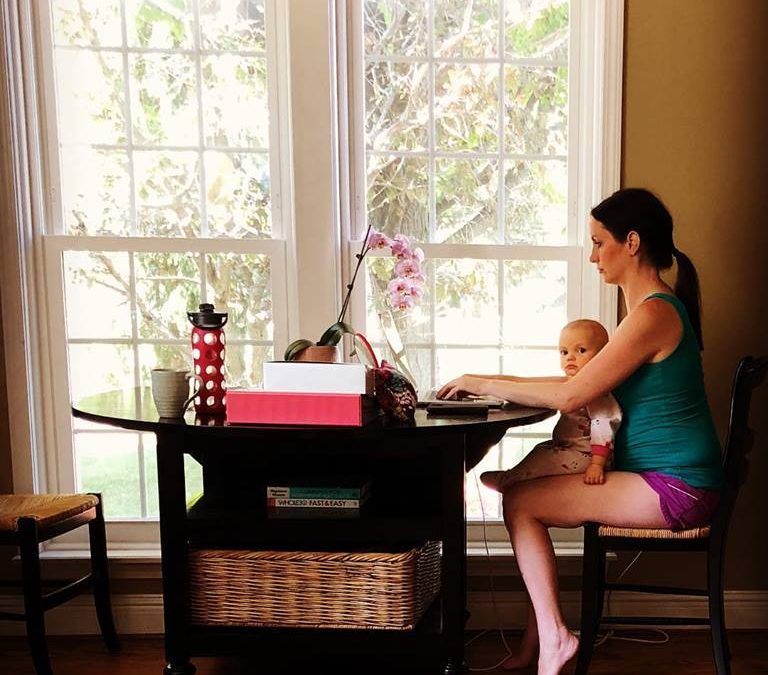
I have had several mamas tell me that their bums were not the same after having babies. They have so much pain in and around their tailbone that it is hard to sit for any period of time and that they are miserable. I have experienced this condition called coccydynia after having babies and really needed some support to help off load the tailbone aka coccyx.
During pregnancy mamas may experience pain from different postural loads placed on the body, as well as the laxity of ligaments from various hormone changes. Coccydynia is also more common in women with higher body mass index. 1Maigne, J. Y., Lagauche, D., & Doursounian, L. (2000). Instability of the coccyx in coccydynia. Bone & Joint Journal, 82(7), 1038–1041. Finally, tailbone pain can result from trauma such as a fall or from labor and delivery.
During labor and delivery the coccyx has to extend backward to allow baby to come through. If the coccyx is unable to move through this biological range of motion, such as pushing in supine (video), this can also cause injuries to the mama. Seven percent of coccyx injuries are related to trauma in vaginal childbirth with half of these being a result of the use of forceps 2Maigne, J. Y., Rusakiewicz, F., & Diouf, M. (2012). Postpartum coccydynia: A case series study of 57 women. European journal of Physical and Rehabilitation Medicine, 48(3), 387–392.
Movements & positions that can cause increased pain for mama include:
- Sitting
- Transitions from sitting to standing
- Going poop
- Excessive intra abdominal pressure such as coughing
- Standing & walking
- Potential increase in pain during a woman’s menstrual cycle (and just before)
What is a mama to do?
- Get off your bum, especially if you are sitting on your tailbone in a rounded back position. This can cause shortening to the pelvic floor muscles. Set a timer to move or stand up every 30 min! Severity of pain is directly related to how long you sit!
- DONUTS are bad for you whether you eat them or sit on them (sorry could not resist). The donut puts more pressure on the tailbone and sit bones. Instead invest not in a Kabooti! This awesome cushion has not only a cut out for the tailbone to hang freely in but it is molded like a toilet seat opening to let your sit bones and pelvic floor be off weighted. I also LOVE the general incline of this cushion because it encourages a neutral pelvis position where your hips may be aligned or slightly above your knees.
- Get physical therapy! Research shows the EARLIER the treatment the more effective pain relief was then later!! 3Howard, P. D., Dolan, A. N., Falco, A. N., Holland, B. M., Wilkinson, C. F., & Zink, A. M. (2013). A comparison of conservative interventions and their effectiveness for coccydynia: A systematic review. Journal of Manual & Manipulative Therapy, 21(4), 213–219 Find a physical therapist that specialize in obstetrics and pelvic floor therapy that can help educate you, tape you, provide manual therapy…or teach you to do your own, and provide you with the “right” exercises for you. I see so often mamas think that they need to kegel when they may need to learn to relax the muscles around the tailbone.
I hope that you find the above tips helpful sweet mama! Dr. Rach xoxo
**Above research and resources obtained from the CAPP-OB training through the Section on Women’s Health Physical Therapy.**
References
| ⇧1 | Maigne, J. Y., Lagauche, D., & Doursounian, L. (2000). Instability of the coccyx in coccydynia. Bone & Joint Journal, 82(7), 1038–1041. |
|---|---|
| ⇧2 | Maigne, J. Y., Rusakiewicz, F., & Diouf, M. (2012). Postpartum coccydynia: A case series study of 57 women. European journal of Physical and Rehabilitation Medicine, 48(3), 387–392. |
| ⇧3 | Howard, P. D., Dolan, A. N., Falco, A. N., Holland, B. M., Wilkinson, C. F., & Zink, A. M. (2013). A comparison of conservative interventions and their effectiveness for coccydynia: A systematic review. Journal of Manual & Manipulative Therapy, 21(4), 213–219 |

